YOUR COMPLETE CHEST WORKOUT FOR MASS
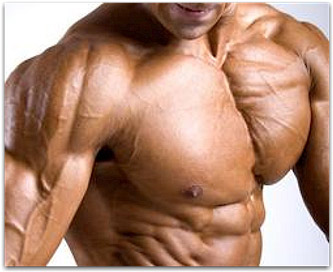
What are the best exercises for building thick, muscular pecs? How many sets and reps should you perform? What is the best way to structure an optimal chest workout for mass?
These questions land in my inbox on a daily basis, and there’s simply no other muscle group that trainees seem to be more interested in developing than their chest.
In this article I’m going to provide a complete, straight to the point guide for effective chest training to help you pack on mass in the most efficient way possible.
Let’s get started…
Complete Chest Workout For Mass: Exercise Selection
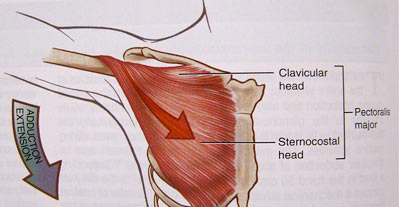
The pec major is broken up into 2 main regions: the lower sternocostal fibers (this is where the majority of the mass is located) and the upper clavicular fibers.
The major function of these heads is to bring your upper arm across the front of your chest. This is known as “horizontal adduction”.
The two main ways to stimulate the pecs are through the use of presses and flyes at either a decline, flat or incline angle.
Flat and decline angles will shift more emphasis onto the lower sternocostal fibers, while incline movements will shift the emphasis onto the upper clavicular fibers.
For complete and well-rounded pec development, I would suggest that your chest workout consist of 2 pressing movements (one at a flat or decline angle, and one at an incline angle), followed by 1 flye movement.
Selecting Your Pressing Movements
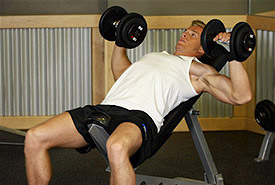
Presses are a compound movement that stimulate the pecs with assistance from the shoulders and triceps.
The four main types of pressing movements you’ll be choosing from are barbell presses (flat, incline or decline), dumbbells presses (flat, incline or decline), wide grip dips and machine presses.
As long as you’re able to effectively recruit your pecs throughout the movement (I’ll outline a few tips for this shortly), any basic press will be effective as long as you’re consistently progressing in weight and reps over time.
That said, I tend to favor the dumbbell press as the most effective of all pressing movements available.
This is because…
1) Dumbbells allow each arm to move independently, which reduces the chances of developing strength imbalances.
2) Dumbbells allow you to follow a more natural range of motion by not only pressing the weights away from your body but also towards each other. This natural arch maximizes pec stimulation and prevents the chances of shoulder injury.
For these reasons, I would suggest using a flat or decline dumbbell press as your core chest movement to target the large sternocostal head, followed by an incline dumbbell press to hit the upper clavicular head.
I would generally recommend that you exclude machine presses and dips unless you have specific equipment limitations or injuries that you are working around.
Always make sure to perform your pressing movements first before you do any type of flye movement.
If you perform flyes prior to chest you end up “pre exhausting” the pecs, which, contrary to what most people think, actually reduces the use of the chest muscles during your presses.
Selecting Your Flye Movements

Flyes are an isolation movement that specifically target the pecs with minimal involvement of surrounding muscles.
The 3 main flye movements you’ll be choosing from are dumbbell flyes (flat, incline or decline), cable crossovers and machine flyes.
Again, any of these movements will work effectively if executed with proper form and if the focus is placed on increasing weight/reps over time.
That said, cable crossovers performed at a high to low angle are probably going to be your best bet for the simple reason that they put the pecs under constant tension throughout the entire range of motion.
When you perform a dumbbell flye, most of the tension is taken off of the pecs toward the top end of the movement due to the force of gravity. When you use cables, the pecs are working from the fully stretched position all the way to the fully contracted position which cannot be achieved using free weights.
If you do decide to go with the dumbbell flye, any of the specific angles are fine (flat, incline or decline) though I tend to recommend the flat variation to most people.
As with machine presses, only select machine flyes if you have a specific injury or equipment limitation that you’re working with.
Complete Chest Workout For Mass: Frequency, Sets & Reps
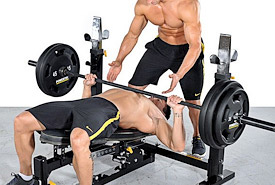
We’ve now established the proper exercise selection, but what about proper training frequency, sets and reps?
Frequency: As with all muscle groups, I recommend training the chest 1-2 times per week. The specific frequency you choose will depend on your recovery ability and the particular training split you’re using.
Sets: The number of sets you perform really depends on the type of training program you’re following. A high intensity to-failure program will obviously use fewer sets than a moderate intensity/higher volume program will.
As a basic recommendation, if you’re taking all sets to muscular failure (the point where you cannot perform any further reps in proper form despite your best efforts), 6 total sets per workout (2 sets of 3 exercises) works very well.
If you’re training 1-2 reps short of muscular failure (this is the minimum intensity level I recommend for most people), 8-10 total sets is a good guideline.
Reps: Perform 5-7 reps for your pressing movements and 8-10 reps for your flye movements. This is not set in stone but is a very reliable guideline to follow.
Complete Chest Workout For Mass: Proper Form
You can have everything structured perfectly on paper, but if you don’t know how to execute each individual rep with proper technique, you may end up hitting your shoulders and triceps to a far higher degree than your pecs.
I would highly recommend reviewing my previous article 3 Killer Chest Workout Tips for some very important form tips that should be applied to all of your pressing and flye exercises.
Complete Chest Workout For Mass: Review
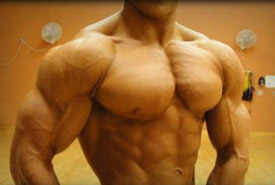
You’ve now learned everything you need to know to structure an optimal chest workout for mass and build those thick, powerful pecs you’re after.
Here’s a quick review of what we covered…
1) Select 1-2 pressing movements and 1 flye movement for your chest workout.
2) Use a dumbbell press as your core movement, followed by either a dumbbell press performed at a different angle or a barbell press. Use high-to-low cable crossovers as your core flye movement, or a dumbbell flye if you don’t have access to cables.
3) Perform your pressing exercise(s) first followed by your flye movement second.
4) Train the chest 1-2 times per week using 5-7 reps for pressing movements and 8-10 reps for flye movements.
5) On a to-failure program, do 6 total sets per workout. On a moderate intensity program, do 8-10.
6) Make sure to review 4 Killer Chest Workout Tips for some very important advice on proper chest training form.
If you found this article helpful, make sure to sign up for your FREE custom fitness plan below...




